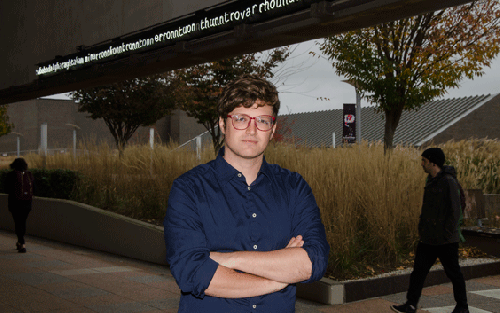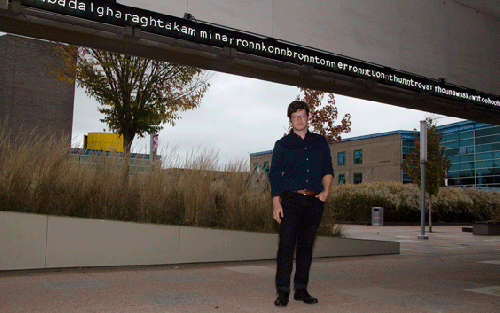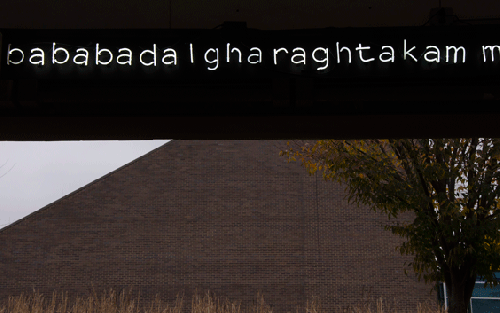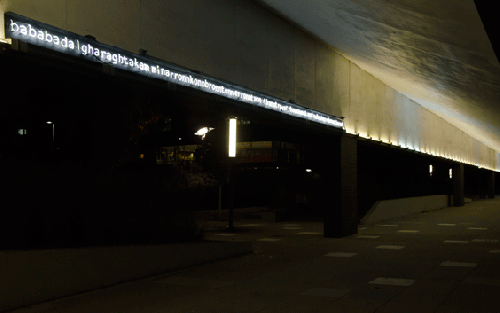2015–16: Michael Barraco ’16
Graduate student Michael Barraco MFA ’16 (visual arts) imagines people will be confused by his recent public art installation, The Word—yet, he hopes it’s a welcome diversion from their daily routine. The Word is one long series of white neon letters stretched just underneath the arcade in front of the Humanities Building that appears to say nothing at first glance.
The small percentage of viewers who may understand the piece, however, are likely frequenting the Humanities Building, since The Word is actually a reference to James Joyce’s Finnegans Wake. Barraco’s piece is the 101-letter word Joyce used to describe the thunderclap of the fall of Adam and Eve on page one of the book. What appears to be gibberish is actually a multi-language portmanteau—the word thunder in several languages mashed together.
“To a certain extent, it’s an inside joke that only people in the literature department might get. But the people who don’t get it are affected more by the piece in a way, because it’s kind of confusing,” he explains.
With interests in literature, natural science, and pop culture, Baracco often mines research material as a source for his art, and he tends to pull what he refers to as “minutiae” out of its original context. “It might not be seen as the most important part of the work, but I find there is richness to explore there,” he says.
The ambition and scale of The Word, however, are new for Barraco. Using his perceived lack of signage on campus as a catalyst, he plays with the viewers’ expectation that signage provides information. Since it can be seen from a distance, The Word looks merely like a glowing piece of the architecture at first. As the viewer approaches, the abstraction takes the form of letters, of something legible. “But as soon as it starts to make sense, it doesn’t make sense again,” he says.
In the end, he hopes The Word induces viewers to ask themselves questions. “I want them to stop and reconsider. Not just passively take it all in, but to reinvestigate the architecture that they’re walking through, to reinvestigate the words that they’re reading, and to reinvestigate what people are telling them in general.”



